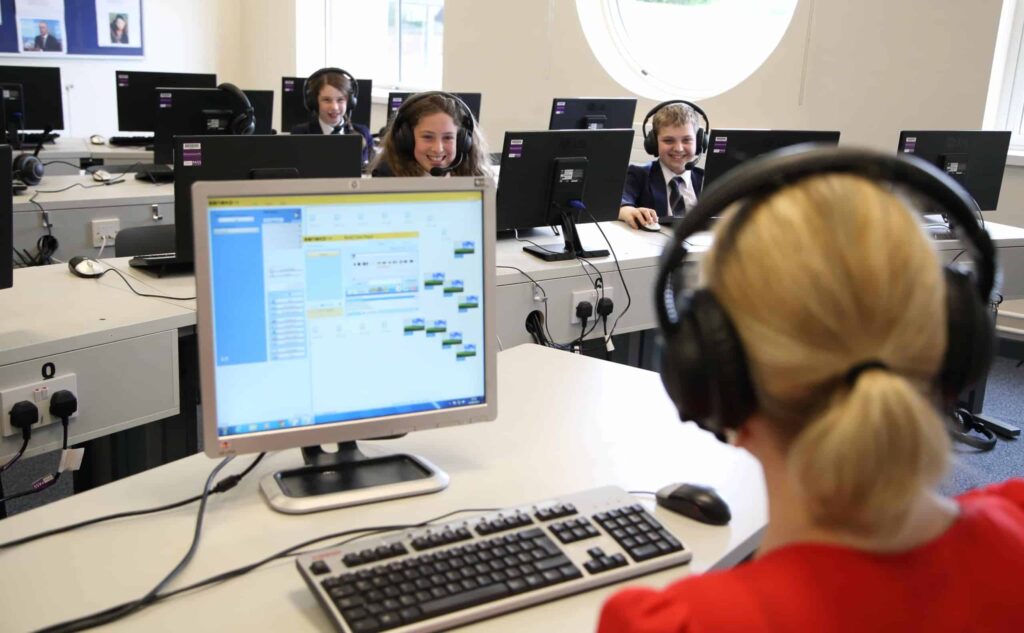The COVID-19 pandemic fundamentally transformed education, accelerating the adoption of digital tools and remote learning solutions across the globe. Among these innovations, language lab software has emerged as a vital resource for language educators and learners alike. As schools and institutions continue to embrace hybrid and remote models, language lab software is proving to be more than just a temporary fix—it’s becoming an indispensable part of modern language education.
What is Language Lab Software?
Language lab software is a digital platform designed to facilitate language learning by integrating audio, video, and interactive tools to enhance listening, speaking, reading, and writing skills. Unlike traditional physical language labs, this software can be accessed anywhere, anytime, making it ideal for remote and hybrid learning environments.
These platforms typically include features such as:
- Real-time audio and video communication
- Pronunciation analysis and speech recognition
- Interactive exercises and quizzes
- Teacher monitoring and feedback tools
- Multimedia content integration
The flexibility and interactivity of language lab software empower educators to create immersive language learning experiences that go beyond textbooks and static lessons.
The Rise of Language Lab Software in Remote Learning
Before the pandemic, language lab were mostly confined to physical classrooms equipped with specialized hardware. However, when lockdowns forced schools to close, educators quickly realized the need for scalable, accessible digital alternatives.
Language lab software offered a seamless solution by enabling:
- Remote student participation: Learners can join lessons from home or any location with an internet connection.
- Synchronous and asynchronous learning: Students can practice speaking and listening skills live with teachers or complete exercises independently.
- Personalized learning: Software can tailor exercises and feedback to individual student needs, enhancing effectiveness.
These advantages led to a surge in adoption during the pandemic—and now, post-pandemic, language lab software continues to be a cornerstone of language education.
Key Benefits of Language Lab Software for Remote Learning
1. Enhances Speaking and Listening Skills
Language acquisition depends heavily on regular practice in speaking and listening. Language lab software often includes voice recognition and pronunciation tools that allow learners to practice and receive instant feedback, replicating the interactive nature of face-to-face conversations.
2. Increases Student Engagement
Interactive features such as games, quizzes, and multimedia content keep students motivated. The ability to communicate in real-time with peers and instructors also creates a dynamic classroom environment—even when learning remotely.
3. Supports Teachers with Monitoring and Assessment
Educators can track student progress, assess pronunciation and fluency, and provide tailored guidance. This real-time monitoring is crucial in remote settings where physical cues are missing.
4. Facilitates Collaborative Learning
Many platforms support breakout rooms and group projects, encouraging peer interaction and teamwork essential for language practice.
5. Offers Flexibility and Accessibility
Students can access materials and practice anytime, breaking down geographic and time barriers. This flexibility supports diverse learning paces and schedules.
Choosing the Right Language Lab Software
When selecting language lab software for remote learning, schools and educators should consider several factors:
- User-Friendly Interface: The platform should be easy for both students and teachers to navigate without steep learning curves.
- Multilingual Support: To cater to diverse learners, the software should support various languages and dialects.
- Robust Audio and Video Quality: Clear communication is essential for language learning, so reliable audio/video is a must.
- Customizable Content: Teachers should be able to create or upload their own exercises tailored to their curriculum.
- Integration Capabilities: Compatibility with existing learning management systems (LMS) can streamline administration.
- Cost and Licensing: Budget constraints require evaluating subscription models and licensing fees.
Popular Language Lab Software Solutions
Some widely used language lab platforms include:
- Rosetta Stone Classroom: Offers speech recognition and immersive lessons designed for classrooms and remote learning.
- Moodle with Language Lab Plugins: A versatile LMS that can be enhanced with language-specific tools for interactive learning.
- Tell Me More: Focuses on pronunciation and communication skills with rich multimedia content.
- Voxy: AI-driven platform with personalized learning paths and real-time progress tracking.
The Future of Language Lab Software Post-Pandemic
As hybrid and remote learning remain prevalent, language lab software will continue to evolve and expand. Emerging technologies such as artificial intelligence (AI), virtual reality (VR), and augmented reality (AR) promise even more immersive and personalized language learning experiences.
For instance:
- AI-powered pronunciation coaches can offer precise, instant corrections and adapt exercises dynamically.
- VR classrooms can simulate real-world conversational environments for practice.
- Gamification elements will keep learners engaged over longer periods.
These advances will help bridge the gap between traditional in-person language learning and the digital remote experience.
Conclusion
The shift toward remote and hybrid education has firmly established language lab software as an essential tool for language learning. Its ability to deliver interactive, accessible, and effective language instruction makes it invaluable for educators and students navigating post-pandemic education.
Institutions investing in robust language lab software will not only enhance language acquisition outcomes but also future-proof their teaching methodologies in an increasingly digital world. Whether you are a language teacher, student, or school administrator, embracing these digital tools is key to thriving in the new educational landscape.
- Language Lab Software for Remote Learning: An Essential Tool Post-Pandemic
- Language Lab Software for Remote Learning: An Essential Tool Post-Pandemic
- Language Lab Software, Language Lab
Related posts:
 Why KBH Games Is Perfect for Family-Friendly Online Entertainment
Why KBH Games Is Perfect for Family-Friendly Online Entertainment
 Build a Seamless School Portal with These Powerful Templates
Build a Seamless School Portal with These Powerful Templates
 The Ultimate Web Development Checklist for Building High-Performance Digital Experiences
The Ultimate Web Development Checklist for Building High-Performance Digital Experiences
 How Ecommerce ERP Transforms Inventory and Order Management – Rholab
How Ecommerce ERP Transforms Inventory and Order Management – Rholab
 Benefits of AI-powered CCTV Cameras for Business Surveillance
Benefits of AI-powered CCTV Cameras for Business Surveillance
 Top App Development Agency UK – Transforming Ideas into Apps
Top App Development Agency UK – Transforming Ideas into Apps
 Transforming Oil and Gas Operations in Qatar with Microsoft Dynamics 365 Supply Chain Management
Transforming Oil and Gas Operations in Qatar with Microsoft Dynamics 365 Supply Chain Management
 How Modern Cars Are Turning to Tech Experts to Solve Connectivity Chaos
How Modern Cars Are Turning to Tech Experts to Solve Connectivity Chaos








